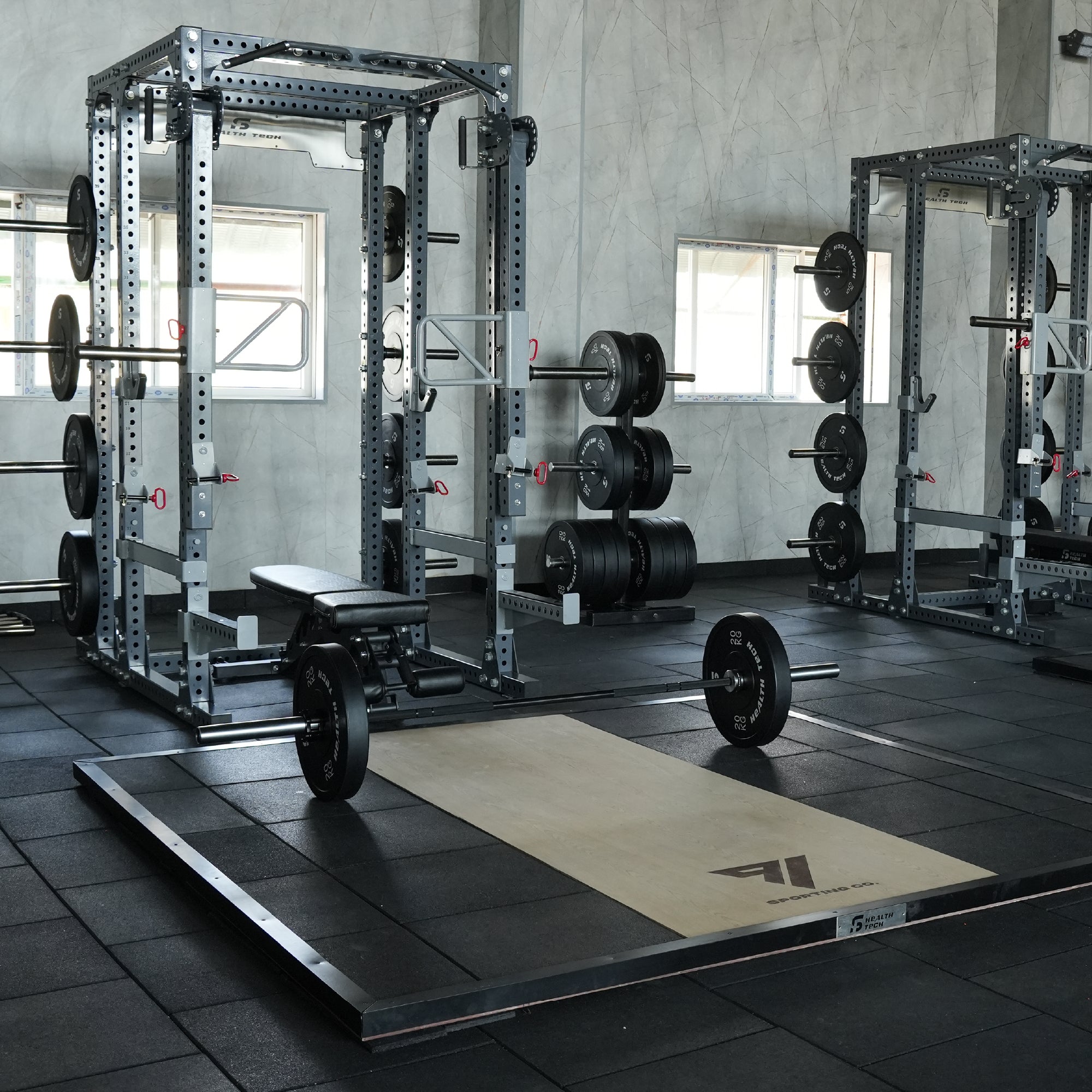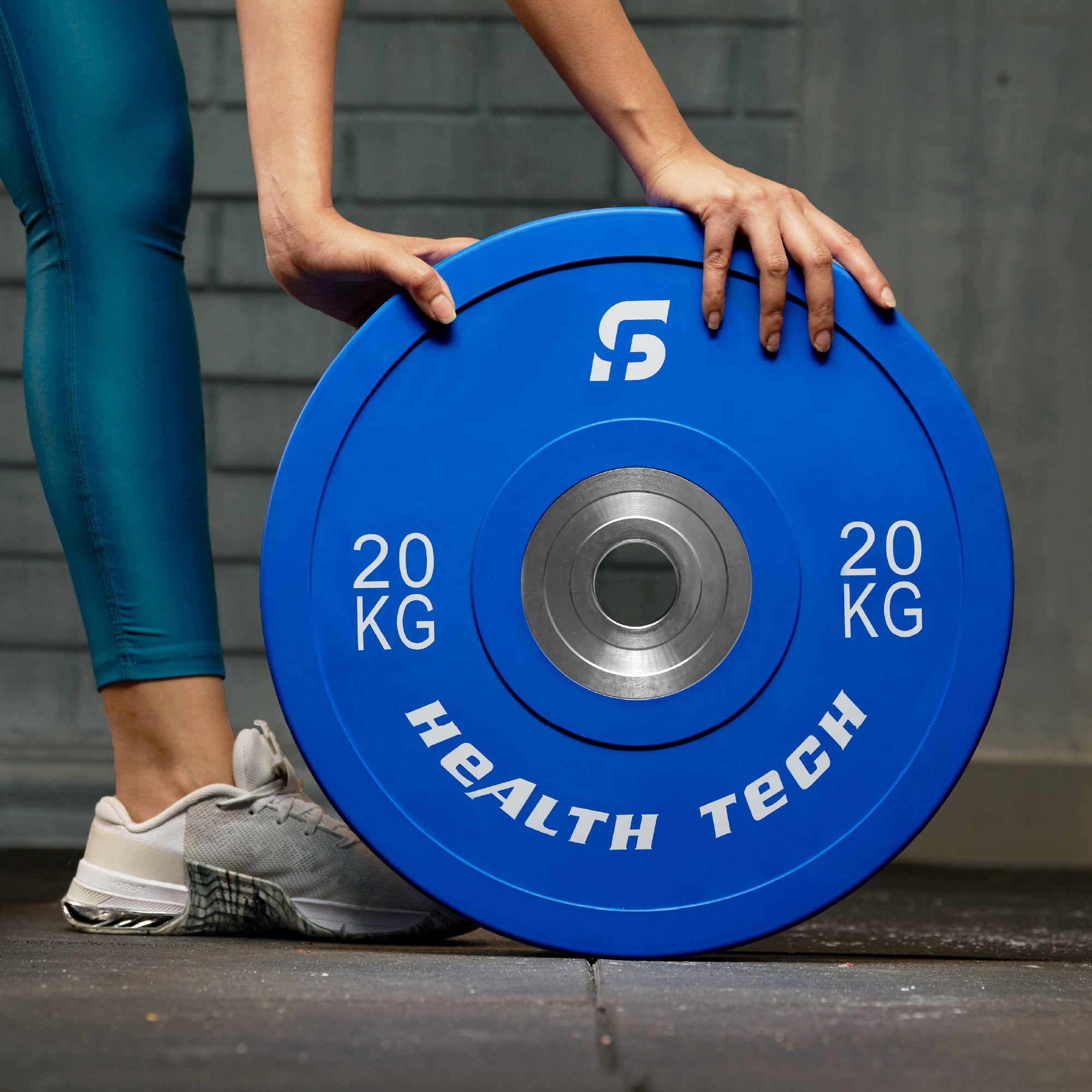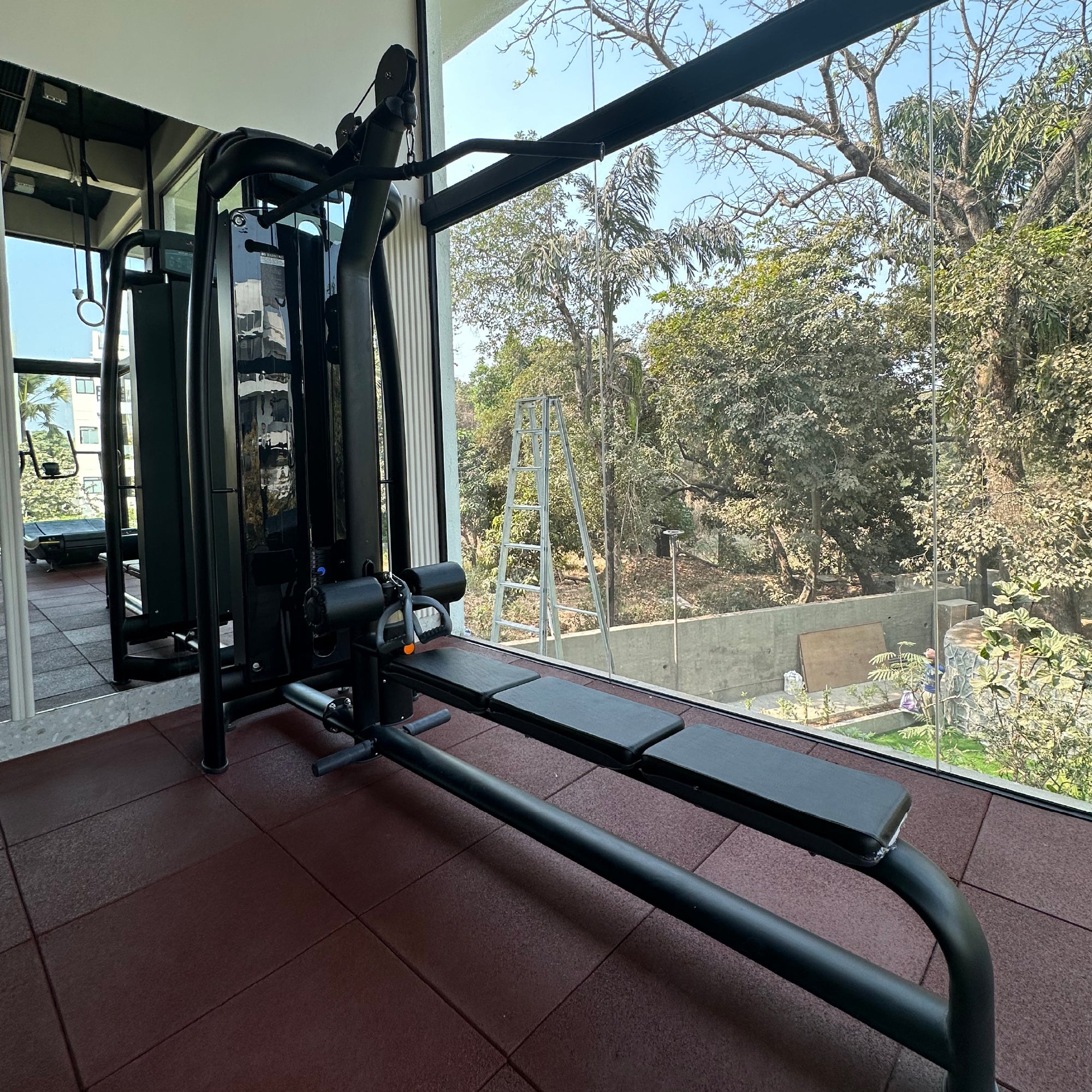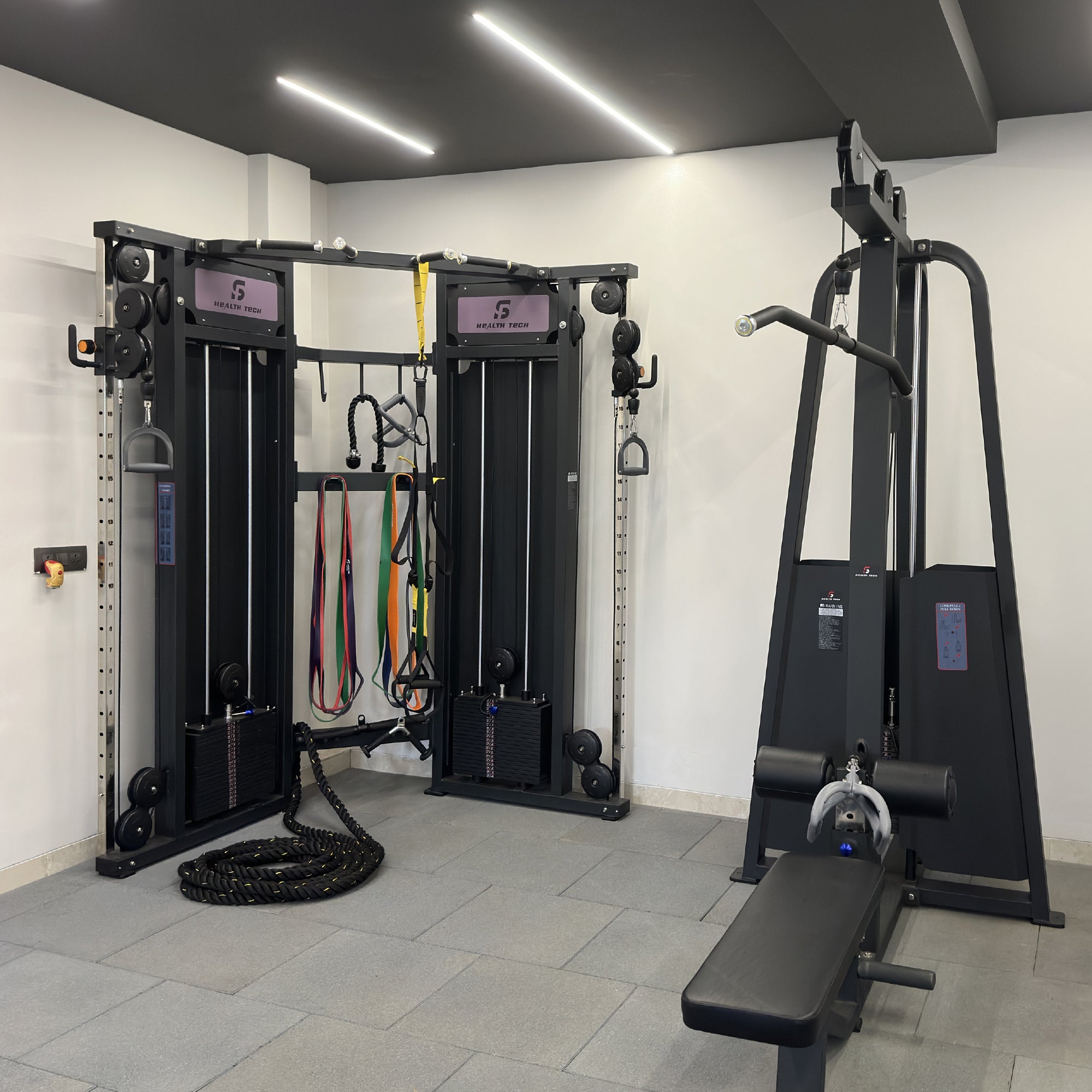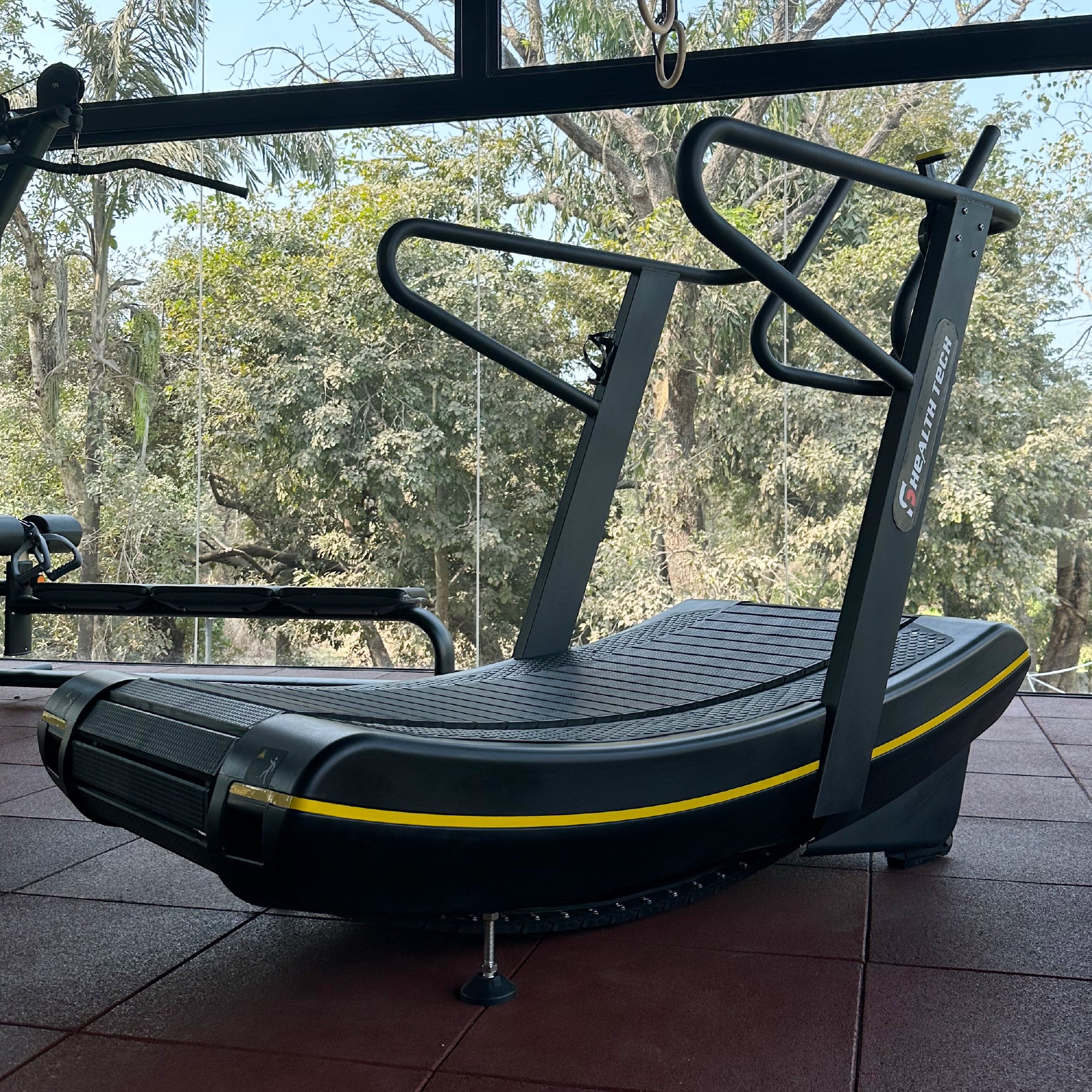10 Best Dumbbell Shoulder Workout for Mass

Strong shoulders are essential for a well-defined upper body and overall health. They help create a V-shaped torso and are vital for daily tasks, like reaching high shelves and carrying groceries. Using dumbbells to strengthen your shoulders is both convenient and effective, aiding in better posture and improved fitness. This guide presents 10 dumbbell exercises that target various parts of your shoulder muscles, promoting balanced development and maximising your upper body potential.
Why Should You Train Your Shoulders?
Strong, well-developed shoulders are vital for a healthy and functional physique. Here are the key reasons to prioritise shoulder training in your workout routine:
- Improved Posture: Strong shoulders help keep your upper body posture straight, reducing hunching and neck pain.
- Better Performance: Strong, defined shoulders are crucial for pushing and pulling, enhancing both athletic activities and daily tasks.
- Less Injury Risk: Balanced shoulder strength boosts joint stability and lowers the risk of injuries during overhead movements.
- Great Looks: Well-developed shoulders create a balanced and toned upper body.
What Muscles Do Dumbbell Shoulder Exercises Work?
You've probably heard about your deltoids, often called "delts." They're divided into three parts: the front (anterior), middle (lateral), and back (posterior).
The front deltoids help when you lift your arm straight in front or overhead. The middle deltoids work when you lift your arms out to the sides. And the rear deltoids come into play when you move your arm behind your body.
While many dumbbell exercises focus on the deltoids, it's important to strengthen the smaller muscles around the shoulder joint for a balanced workout. This includes the rotator cuff muscles, a group of four smaller muscles that provide stability to the shoulder joint.
Best Dumbbells for Shoulder Exercises
Dumbbells are awesome for working out your shoulders because they let you move your arms in lots of different ways, unlike barbells. This means you can really target those shoulder muscles and improve how well you can balance and move. Plus, using dumbbells for exercises where you work one arm at a time can help you see if one shoulder is stronger than the other and fix any differences.
When picking dumbbells for your shoulder exercises, think about what type you want.
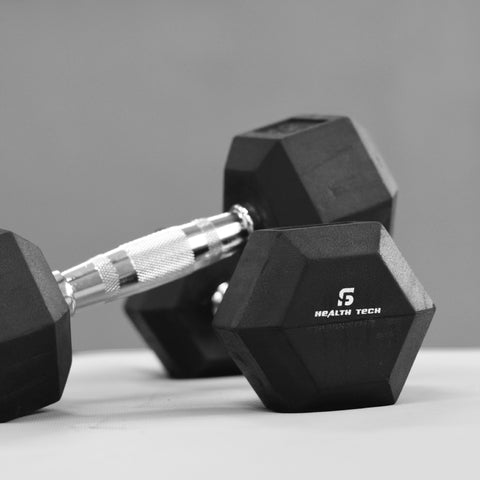

- Hex dumbbells have a flat side, so they won't roll away and are steady during exercises.
- Adjustable dumbbells are good if you're short on space and want to change the weight easily.
There are also fixed-weight dumbbells in different sizes and water dumbbells you can fill up to adjust the weight.
Just choose the type that works best for you and your workout area.
10 Best Dumbbell Exercises for Shoulders
-
Dumbbell Shoulder Press
The dumbbell shoulder press is a top-notch exercise for building strong and robust shoulders. It engages multiple muscles simultaneously, allowing you to lift significant weight. Its primary targets are the front deltoids and triceps.
You can perform the dumbbell shoulder press, either seated or standing. Seated presses are particularly effective for increasing shoulder muscle mass as they isolate the shoulders and eliminate support from the legs and lower back. For optimal muscle growth, aim for a repetition range of eight to twelve.
One common mistake to avoid during the dumbbell shoulder press is using weights that are too heavy. Since the shoulder joint is highly mobile, attempting very heavy weights with low reps can strain the joint and increase the risk of injury.
How to Perform the Dumbbell Shoulder Press
- Select an appropriate weight based on your desired rep range. Lift each dumbbell and position them at shoulder level, palms facing forward.
- Push the weights upward until they meet above your head. Then, lower them back down to shoulder level.
- Ensure you complete full repetitions, moving the weights through the entire range of motion. This engages more muscle fibres and promotes greater shoulder muscle development.
- Repeat these steps for your chosen number of reps and sets, maintaining consistent weight throughout your workout.
-
Dumbbell Front Raise
The dumbbell front raise is a great way to strengthen your shoulders. It focuses on the front part of your shoulder muscles. Since it targets a specific area, it's best to use lighter weights.
With lighter weights, you can do more repetitions, like 10 to 20. Make sure not to swing the weights or use momentum. Keep each movement controlled and use your shoulder muscles to lift the weights.
How to Do It:
- Stand straight with dumbbells by your thighs, palms facing inward.
- Lift one dumbbell in front of you until it's just above your shoulder, keeping your arm almost straight.
- Hold for a moment, then lower it slowly.
- Repeat with the other arm.
- Try doing 10 to 15 reps with each arm.
-
Dumbbell Push Press
The dumbbell push press is a full-body exercise that strengthens your shoulders, core, and legs. It's a great way to improve your upper body strength. Here's a breakdown of the exercise with proper form:
How to Do It:
- Keep your feet hip-width apart and hold the dumbbells firmly at shoulder level with your palms facing forward.
- Engage your core muscles and keep your back straight with a slight bend in your knees.
- Lower yourself down slightly, similar to a squat, then quickly push through your legs to straighten your body.
- As you rise, press the dumbbells straight up overhead until your arms are locked.
- Slowly bring the dumbbells back down to your starting position.
-
Dumbbell See Saw Press
The dumbbell see saw press is a powerful exercise that engages your entire upper body. By holding a dumbbell in each hand just behind your shoulders and lifting one arm at a time, you can work with heavier weights without both arms being raised simultaneously. This exercise promotes strength and stability throughout your upper body.
How to Perform the See Saw Press:
- Hold two dumbbells behind your shoulders with your palms facing forward.
- Lift one arm straight above you while leaning slightly to the opposite side.
- Lower the dumbbell and repeat the motion on the other side, creating a see-saw effect.
- Each repetition involves both arms performing the movement in sequence.
-
Dumbbell Side Lateral Raise
The side raises with dumbbells focus on the outer part of the shoulders, called the lateral head. This muscle helps give your shoulders a broader look. To strengthen it, simply lift your arms out to the sides, away from your body.
It's best to use lighter weights and do more repetitions for this exercise. Avoid going too heavy, as it can strain your muscles and make the exercise less effective.
You can do this exercise sitting or standing. Sitting can make it a bit easier on your lower back and really targets your shoulders.
How to do Side Raises:
- Sit on a bench with a dumbbell in each hand, palms facing your thighs.
- Lift your arms out to the sides until they're in line with your shoulders. Hold for a moment.
- Slowly lower your arms back down.
- Make sure you're feeling it in your shoulders, not your neck or upper back.
- For a standing version, stand with your arms at your sides.
- Try doing 2 to 3 sets of 12 to 15 reps to get the most out of this exercise.
-
Dumbbell Upright Row
The dumbbell upright row is a versatile exercise that targets your shoulders and traps. Depending on how you position your elbows, you can focus on different muscles. Keeping your hands closer together works your traps more, while a wider grip targets the side delts.
This exercise allows for heavy weights due to its compound nature.
How to Do It:
- Hold a pair of dumbbells and stand straight with the weights resting on your thighs, palms facing down.
- Engage your shoulder muscles and lift the weights and elbows upward, keeping your palms facing the floor.
- At the top of the movement, your elbows should be in line with your shoulders and facing forward, creating almost a 90-degree angle.
- Hold for a moment, then slowly lower back to the starting position.
- For more trap engagement, keep the weights closer together.
- Aim for 3 sets of 8 to 12 repetitions.
-
Reverse Fly With Dumbbells
The reverse fly is a great exercise for strengthening your back muscles, including the posterior deltoids, rhomboids, and middle traps. It also helps improve posture. Here's how to do it:
- Stand tall with proper posture and your feet hip-width apart.
- Hold a dumbbell in each hand with your arms extended, palms facing your body.
- Hinge forward from your hips while keeping your back flat and avoiding rounding.
- Focus on lifting your arms out to the sides, as if you're a bird spreading its wings. Squeeze your shoulder blades together.
- Hold the squeeze for one to two seconds.
- Slowly lower the dumbbells back down until they meet under your body.
- Perform eight to 12 repetitions.
Remember to maintain control throughout the movement and focus on proper form for best results.
-
Dumbbell Punches
The Dumbbell Punch exercise mimics a real punch and is great for building functional strength or improving sports performance.
How To Do It:
- Stand with feet shoulder-width apart, holding a dumbbell in each hand.
- Keep elbows bent at a 90-degree angle, fists near the chin like a boxing stance.
- Extend one arm forward in a punching motion while keeping the other arm near the chin for defence.
- Quickly retract the punching arm and alternate with the other arm.
- Repeat for the desired number of reps.
-
Bicep Curl to Shoulder Press
The bicep curl-to-shoulder press is a powerful exercise that targets both your biceps and shoulders efficiently. It merges two movements seamlessly, making your workout more effective.
How to Do It:
- Stand tall, holding a dumbbell in each hand, arms straight down, and palms facing inward. This is your starting position.
- Without moving your upper arms, bend your elbows and lift the weights toward your shoulders while exhaling, contracting your biceps.
- Once your biceps are fully contracted and the dumbbells are at shoulder level, pause briefly, squeezing your biceps.
- Rotate your wrists so your palms face forward.
- Push the dumbbells upward until your arms are straight above your head.
- Lower the dumbbells back down to shoulder level.
- Rotate your wrists to return to the starting position, then lower the dumbbells to your sides.
- Repeat for the recommended number of reps.
-
Dumbbell Shoulder Shrugs
If you're looking to strengthen your neck and traps, consider dumbbell shoulder shrugs. They're straightforward exercises, but it's crucial to focus on form and technique.
Common mistakes include using weights that are too heavy and not completing the full range of motion, which is essential for effective training.
Dumbbell shrugs can be done with a variety of repetitions, typically ranging from 6 to 15.
How to Do Dumbbell Shrugs:
- Hold a dumbbell in each hand by your sides, outside your hips.
- Keep your arms straight with relaxed elbows (not locked out).
- Lift the dumbbells as high as possible by shrugging your shoulders toward your ears.
- Hold for a second before lowering them back down.
- Avoid pushing your head forward, as it reduces the effectiveness of the movement.
- Engage your core and repeat.
- Aim for 2 to 3 sets of 8 to 12 repetitions.
Getting Your Shoulders Ready for Exercise
Before diving into your workout, it's crucial to prepare your body properly. This is especially important for your shoulders to avoid injuries and get the most out of your exercises.
Experts suggest starting with simple warm-up exercises like arm circles, shoulder rolls, and gentle stretches. These activities help increase blood flow and flexibility in your shoulder joints. Additionally, doing light sets of your planned exercises with good form can activate and prepare your shoulder muscles for more intense movements. It's a good idea to start with bodyweight exercises before adding any extra weight, like dumbbells.
Selecting the Right Dumbbell Weight for Shoulder Exercises
Start with lighter dumbbells, maybe around two to five pounds, depending on how strong your shoulders are. Once you can comfortably do eight to 12 reps with good form, you can try using heavier weights.
If you find it hard to do eight reps with proper form, or if you're using momentum to lift the dumbbells, go for a lighter weight.
If you feel any discomfort or pain in your shoulders during these exercises, stop immediately. It's wise to consult with a physical therapist or certified trainer to ensure you're doing the exercises correctly and to address any potential shoulder issues.
Transform your fitness journey with quality gym equipment tailored to your unique needs and goals. Explore SF HealthTech and discover the finest gym equipment.
Frequently Asked Questions (FAQs)
-
What are the benefits of dumbbell shoulder exercises?
Dumbbell shoulder exercises can improve your posture, stability, muscular endurance, muscle development, and overall shoulder mobility.
-
How many sets and reps should I perform?
Beginners should aim for 2 sets of 12-15 reps with 2 exercises per session. Experienced trainers can do 2-3 sets of 8-12 reps with 3-4 exercises per session.
-
How often should I train my shoulders with dumbbells?
Aim for shoulder exercises twice a week. Each session should include:
- 10 minutes: Upper body stretch (shoulders & back)
- 20-30 minutes: Shoulder exercises (combined with upper body exercises)
- 5-10 minutes: Light stretching
- 10-20 minutes: Cardio or HIIT
-
How to warm up my shoulders before a workout?
Do arm circles, shoulder rolls, and gentle stretches to improve blood flow and flexibility. Perform light sets of your planned exercises with proper form to activate your shoulder muscles.
-
Are there any safety tips for dumbbell shoulder exercises?
Yes! Maintain good posture, warm up properly, and gradually increase intensity throughout your exercises.
-
Can I do dumbbell shoulder exercises if I have shoulder pain?
Maybe. While exercise can help with shoulder pain, it's important to be aware of factors that may worsen it. The tips above can guide you, but consult a doctor for personalised advice.



